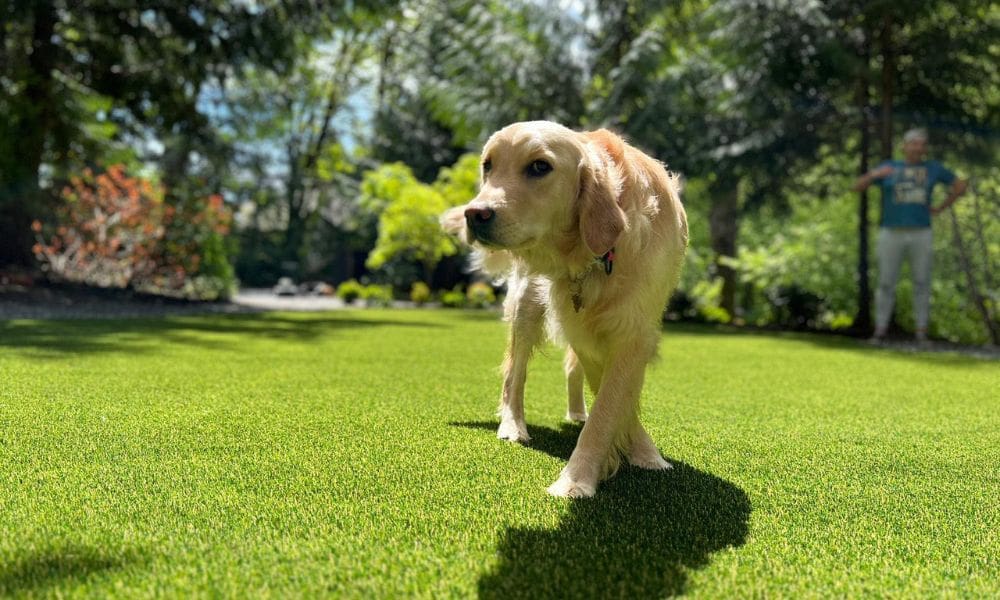Creating a safe, clean, and enjoyable outdoor space for your pets starts with selecting the best synthetic grass for pets. Unlike traditional lawns, artificial grass offers durability, low maintenance, and hygiene benefits, making it an excellent choice for pet owners. Choosing the right type ensures your furry friends can play freely without damaging your lawn or creating messes. From understanding materials to assessing drainage and durability, this guide will help you make informed decisions for a pet-friendly outdoor environment.
Understanding the Needs of Your Pets
Before selecting synthetic grass, it is essential to consider your pets' habits. Dogs, cats, or other animals have different activity levels, and their play areas can affect the type of artificial grass required. Energetic pets may need thicker, more durable blades, while smaller or older pets may do well with softer, more cushioned surfaces. Ensuring the grass feels comfortable under their paws while resisting wear and tear is a critical factor in your decision-making process.
Material and Blade Quality
Synthetic grass comes in various materials, typically polyethylene, polypropylene, or nylon. Polyethylene is soft and pet-friendly, while nylon offers high durability for heavy-use areas. The blade height and density are equally important, dense, multi-layered grass blades provide better cushioning and prevent rapid matting from pet activity. High-quality materials ensure longevity, reduce odor absorption, and maintain a lush, natural appearance over time.
Drainage and Hygiene Considerations
Proper drainage is vital when installing artificial grass for pets. Good drainage systems prevent pooling of water, urine, or spilled liquids, keeping the area sanitary and odor-free. Look for synthetic grass with perforated backing or integrated drainage layers to allow liquids to flow through easily. This not only keeps your pets safe and healthy but also simplifies cleaning routines, saving time and effort for pet owners.
Maintenance and Cleaning Ease
One of the main advantages of artificial grass is its low maintenance. However, ease of cleaning varies depending on the type of synthetic grass chosen. Select options that allow for easy hosing, brushing, or rinsing to remove pet waste, dirt, or debris. Some synthetic grasses are designed with antimicrobial properties, further enhancing hygiene and reducing unpleasant smells. Choosing the right product ensures your lawn remains attractive and safe with minimal effort.
Safety and Comfort
Safety is a critical aspect of choosing the best synthetic grass for pets. Ensure the product is non-toxic, free from harmful chemicals, and provides a soft, cushioned surface for pets to play or rest on. Heat retention is another factor, some synthetic grasses can become hot under direct sunlight, which may be uncomfortable for pets. Opting for high-quality fibers with cooling technologies or lighter colors can help maintain a safe and comfortable outdoor environment.
Longevity and Durability
Artificial grass should withstand heavy foot traffic and pet activity without showing signs of wear. High-quality products resist flattening, tearing, or fading, ensuring your outdoor space remains visually appealing for years. Consider the warranty, blade resilience, and backing strength when evaluating synthetic grass. Investing in durable options minimizes replacement costs and provides long-term value while keeping your pets' area functional and safe.
 Making the Final Choice
Making the Final Choice
Selecting the best synthetic grass for pets involves balancing durability, comfort, hygiene, and maintenance ease. Consider the size of your outdoor area, the type and number of pets, and your climate to make the most suitable choice. High-quality artificial grass offers a lush, low-maintenance lawn that allows pets to play freely while keeping your home and garden clean. By carefully evaluating your options, you can create a safe, enjoyable, and beautiful outdoor space for your furry friends.






